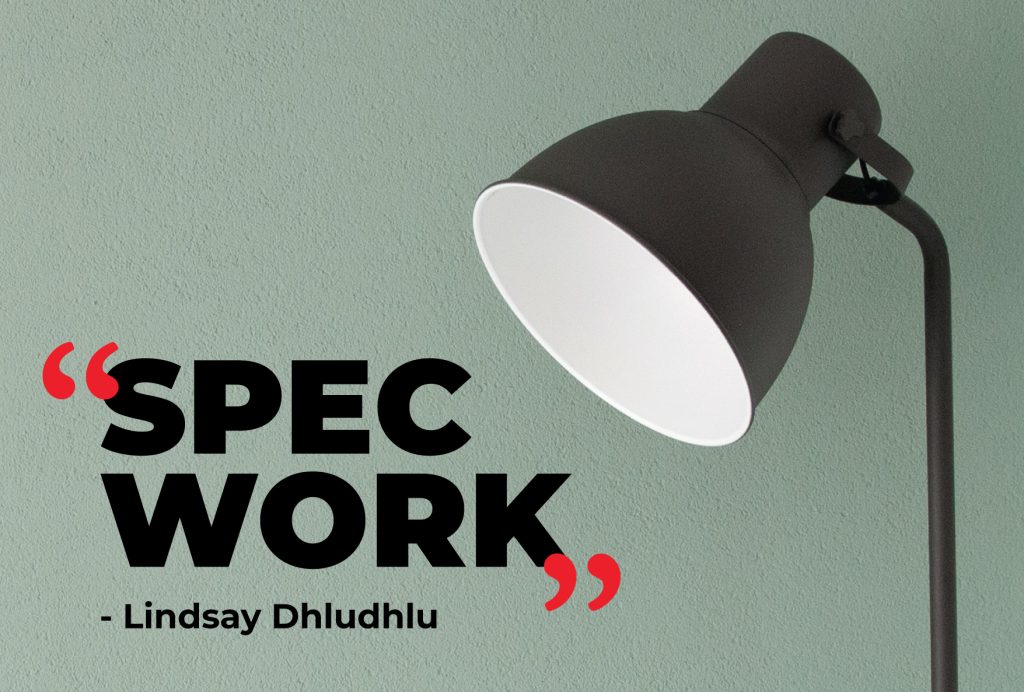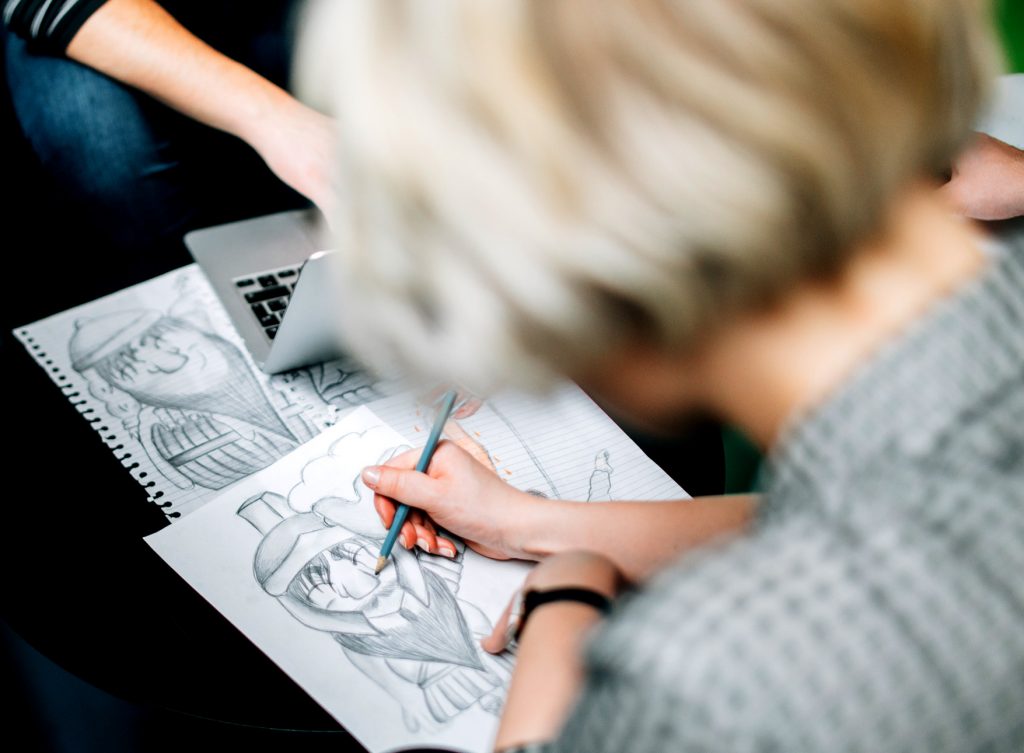24 Jan Speculative Work and How It Affects the Design Industry
Imagine this scenario.
“I took my car for a service quotation yesterday. After the mechanic inspected my car, he advised that I bring my car in as soon as possible to prevent further damage to the engine. I told the mechanic to go ahead, and if the servicing on the car was satisfactory I’d be more than happy to pay. He said he wouldn’t be able to do that because he normally provides a service when a fee is agreed and paid for in advance. I said I’d let him know after I checked in with other local mechanics.”
Improbable, isn’t it? When you visit a mechanic you expect to pay for a professional service. Yet every day, professional designers are asked to provide free services in the impractical hope of being paid.
What is ‘speculative work’ or ‘spec work’?
According to the Professional Association For Design AIGA (2017), speculative work is design work that is done prior to engagement with a client in the anticipation of the designer to get paid, but payment becomes incoherent, this type of arrangement occurs among clients and designers. Yet not all unpaid design work is considered “spec work.” Spec work is considered as free pitching and is considered unethical among leading graphic design associations. AIGA acknowledges that unpaid work may take five forms of practice:
- Speculative or “spec” work: work done for free, in hopes of getting paid for it
- Competitions: work is done in the hopes of winning a prize—in whatever form that might take
- Volunteer work: work done as a favour or for the experience, without the expectation of being paid
- Internships: a form of volunteer work that involves educational gain
- Pro bono work: volunteer work done “for the public good”
Not all of the above are considered speculative work, and in fact, many designers choose to do unpaid work for a variety of reasons. Students and professionals may draw different lines on what constitute unacceptable practices. In each case, however, the designer and client make the decision and must accept the associated risks.
For an example, I spoke to a South African graphic designer who was willing to share her experience. Telita Esterhuizen wrote:
Working in the design industry can be really tough. Everybody’s second cousin is a “designer” nowadays and people that went through years of formal education cannot keep up with the pricing of these pop-up so-called designers. I was sceptical of catching the attention of “big” client, asking myself What would I do if I waste time preparing a proposal and never get contact again? A few years back, I did a proposal for a “big” client (who shall not be named). I spent a lot of time and effort on the proposal, just for it to be ignored and received no response regarding the graphics I had worked on. I wrote it off as hours wasted but almost a year later the client contacted me and within a week deposits were paid and the work was rolling in. The point of emphasis was that no work is ever truly a waste of time. I made an impression. I don’t know why they didn’t contact me back soon after the proposal (perhaps it was due to the pricing) but I do know that I left a good impression in their minds and they contacted me as soon as they could with a new project. The most important thing to remember is to never give up and do not overprice your rates to ridiculous amounts in order to make ends meet. The “big” clients will come and find quality in your work.
From Telita’s experience, I gather that as a young designer in her time, she had reason to undervalue her pricing practice; this type of thinking could cost the young designer his/her actual rate of return. When clients or companies notice the affordable rates provided by young designers they want to exploit them to do their work for minimal payment of either monetary compensation or their favourite designer currency, which is exposure. Telita not once questioned her client for the inconvenience caused due to the late response, the effort calculated as hours wasted were considerably regarded as a loss to the designer; and for the mere fact that Telita had thought her quotation was over-priced for her client to respond back. Instead, she had to conform to the client’s needs without active response or resistance as soon as the client decided to render her services, and with optimism, she still had the patience to produce new artworks.
Con Kennedy states that a more effective and ethical approach to commission work is for the client to request a panel of suitable designers to submit examples of work from previous assignments accompanied with a statement of how they would approach the assignment in question. This way the client can assess the quality of the designers’ previous work and their way of thinking without the designers having to supplement the costs and overheads of producing speculative work. The selected designers can then begin to work on the assignment by producing an original solution to the client’s brief, while under contract and without having to work on speculation up front. Ultimately it is up to the designer — to end this practice and to educate and inform clients about the best way to commission design. There will always be designers willing to produce speculative work and designers who fear that they will not win business if they do not participate in these competitions, but it is a risky path for both the designer and client.
What are the risks of spec work?
Designers and clients should consider all of the potential risks before entering into speculative work. AIGA (2017) states that clients risk compromised quality. The little time, energy and thought can go into speculative work, which forestalls the most important element of most design projects such as the research, thoughtful consideration of alternatives, development and testing of prototype designs.
On the receiving end, designers risk being taken advantage of. Some clients may see this as a way to get free work; it also diminishes the true economic value of the contribution designers makes toward client’s objectives. There are legal risks for both parties should aspects of intellectual property; trademark and trade-dress infringements become a factor.
Is spec work an aspect of the intellectual property and how is it included in the copyright of the South African law?
According to Legal Risk Advisor, Samantha Baleson of Aon South Africa, the copyright law in South Africa is governed by the Copyright Act, 98 of 1978. “The Act provides protection against the unauthorised copying or reproduction of certain ‘works’. Infringements of Intellectual Property (IP) or copyright are also dealt with in the Act and the main remedies which can be sought to obtain relief are an interdict and an award for damages,” says Samantha. Speculative work in this instance is regarded as the ‘works’ of the considered intellectual property.
“Copyright generally vests in the author of work except where the work is made by the author in the course of his/her employment, in which case the employer is usually the owner in terms of the contract of employment. For this reason, copyright vests in the professional practice or firm and not in the actual employee who created the document or drawing,” Samantha explains.
In the terms of client and agency or designer aspect, Samantha states that a client may use the copyright or intellectual property for the sole purpose of a project for which they have remunerated the service provider that created same. Ownership of the IP, however, still vests in the service provider, unless the agreement with the client stipulates otherwise.
Although a client may be entitled to the use of copyright on the project for which they remunerate the professional, certain clients may attempt to use such principles and designs improperly to their own advantage while they undertake the work themselves and/or re-invite tenders based on these ideas of the professional. The risk of the problem becomes twofold:
- The professional is at risk of being sued in terms of his/her designs for projects he /she wasn’t even aware of;
- The professional is not remunerated for the use of his/her intellectual property.
Can Speculative Work Influence the Economy Through Professional Collaboration?
It is important for both parties to be aware of the risks involved in paid and unpaid speculative work. Some clients may argue that all work is speculative work and the ideas that belong to the professional are just that, ideas until the professional has to prove his or her work practices for remuneration. Undoubtedly, spec work may govern innovation but the true factor is a respected collaboration between the client and the professional to maintain high industry standards with minimal flaws of which uplift the South African economy.
In conclusion, there must be a collaboration between the client and the designer, for design to be an effective business asset. For some clients, speculative creative work often works against a marketing plan, unless there is a proper assessment of the objectives. Clients will benefit from a professional designer’s approach, which can help meet client marketing goals more successfully and more economically.
A BWD certified member can make a client stand out, motivate potential customers, cultivate brand recognition, and influence public perception of companies, services or products. Experienced graphic or communication designers understand how to extend clients’ reach into the marketplace and help clients achieve their full market potential.
A professional graphic or communication designer is a business connoisseur, seeing projects from the planning, concept development and budgeting stages, through to production, quality control and the finished product. A BWD certified designer exposes you to expertise in communication strategies, effective problem solving, and showcase highly specialized design skills. A designer will help articulate business objectives and crystallize ideas, and reward clients with thoughtful visual communications that make their messages clear.
Graphic or communication design should display a company image that represents a high-quality business profile because a quality design is an effective design. As Anthony Dunne and Fiona Raby have once said, “We believe that by speculating more, at all levels of society, and exploring alternative scenarios, reality will become more malleable and, although the future cannot be predicted, we can help set in place today factors that will increase the probability of more desirable futures happening.”
Zulu Alpha Kilo – Say No To Spec









